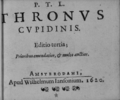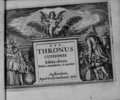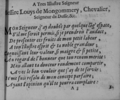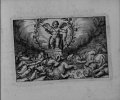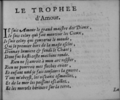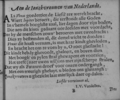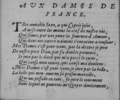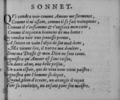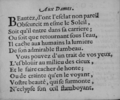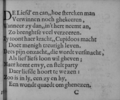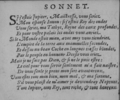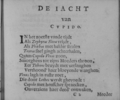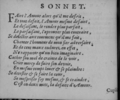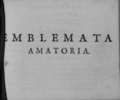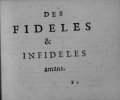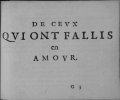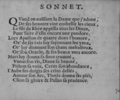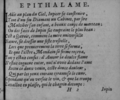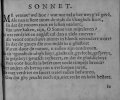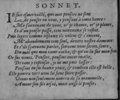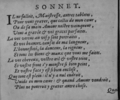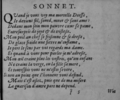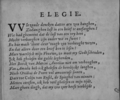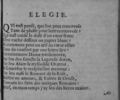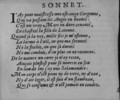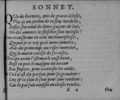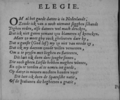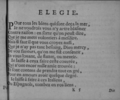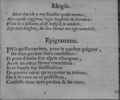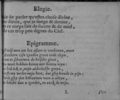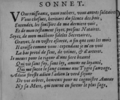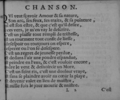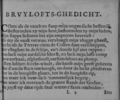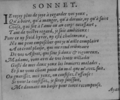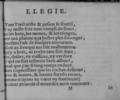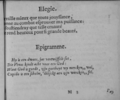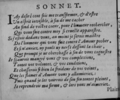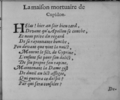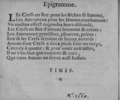Introduction
This is our edition of Thronus cupidinis of 1620. In this introduction, we have limited ourselves to the essentials.
About the Authors and Engravers
The first edition of Thronus cupidinis appeared in 1617.1 The first time the book is mentioned is in the a resolution by the 'Staten Generaal' (the Dutch parlement) of December the 17th, 1617. On this occasion, a request from Crispijn vande Passe sr. to obtain the privilege to publish the book is turned down. Despite this decision, Crispijn vande Passe sr. published a book called Tronus cupidinis (without the 'h') a little later that same year, with the misleading announcement 'cum privilegio'. The engravings of this edition were made by Crispijn vande Passe sr. himself. The book consisted of 52 emblems, the first one deriving from Heinsius's Ambacht van Cupido (1613) (see: [Titlepage]), another one (nr. 16) from Alciato's Emblematum liber, and 23 stemming from Vaenius's Amorum emblemata (see: [Titlepage]). A yet not identified author with the initials 'P.T.L' claimed to be the creator of the texts of Tronus cupidinis.
When this publication was noticed by another Amsterdam printer Willem Jansz. Blaeu (1608-1639), he took immediate action to compete with Vande Passe's Tronus cupidinis. This book being not protected by any priviliges, Jansz. could divide its content into two separate editions. The first one, containing love emblems by Vaenius, was published in 1618 titled Emblemata aliquot selectiora amatoria (see: [Titlepage]). The second one also appeared in 1618 and was titled Thronus cupidinis, 'editio altera'. The re-edition of this book dating from 1620 is used digitized on this site. For the 1618-edition of the Thronus cupidinis Jansz. had other etchings made - obviously Crispijn vande Passe sr. was not going to lend his copperplates to his opponent -, drawn up by Crispijn vande Passe jr. and Michel le Blon: the same engravers who made the picturae of Heinsius's Ambacht van Cupido (see: [Titlepage]) in the 1616-edition.
Jansz. invited a number of Amsterdam poets to contribute to both of his emblems
books dating from 1618. Vondel, Roemer Visscher and Bredero made an effort in translating,
adapting and remodelling the examples of Heinsius and Vaenius. Some of their emblems and
poems printed in
Thronus cupidinis had allready been published by D.P. Pers in the
Nieuwen verbeterden lust-hof (1607) and
Apollo of ghesangh der musen (1615). Blaeu also used an illustrated edition of
Ovid's Metamorphoses, published in 1602 by Vande Passe (see: Vande Passe, Metamorphoseon Ovidianarum as a source for the Latin texts in the second and third part
of the Thronus
cupidinis).
as a source for the Latin texts in the second and third part
of the Thronus
cupidinis).
About the Thronus cupidinis
The first edition of the Tronus cupidinis dating from 1617 is extremely rare: only two copies survived. The book was completely remodelled and restyled in 1618, and printed again in 1620 ('editio tertia'). These second and third editions are alike, albeit that printing errors were corrected in 1620. In the first edition of Tronus cupidinis 23 emblems were based on Vaenius's Amorum emblemata (see: [Titlepage]), while in the second and third edition of the book by Blaeu only 4 emblems can be traced back to Vaenius's example (Celerem oportet esse Amatoris manum [3], Amor cæcus [6], Facundia ducit Amorem [12] and Inevitabilis ictus [14]. The one emblem based on Alciato's Emblematum liber also made its way to the 1618 and 1620-editions. The other 27 emblems of Thronus cupidinis are most likely made by the unknown 'P.T.L'.
The 1620-edition of the Thronus cupidinis consists of a number of preliminary poems. The [Dedication] is dedicated to Louys de Montgommery, the grandson of a well-known Hugenot who started studying in Leiden in November 1615. This poem is followed by two Latin verses and a great number of French and Dutch poems, among which a translation of Heinsius's 'Aen de Jonckvrouwen van Hollandt'(see: Aen de Jonckvrouwen van Hollandt), Aux Dames de France, Le Trophee d'Amour by Ronsard and Aen de Ionckvrouwen van Nederlandt signed by Vondel. This preliminary poems are then followed by 32 emblems and - again - a great number of poems (sonnets, epithalamia, songs by Ronsard, Marot, Roemer Visscher, Bredero and Spiegel). Bredero, who made his debut as an emblem writer in the 1607-edition of Vaenius's Q. Horatii Flacci emblemata (see: ), wrote the Dutch subscriptio's for all 32 emblems in the Thronus cupidinis.
The Thronus cupidinis was popular in the Netherlands and abroad. It has for instance in its first edition influenced the Amsterdam poet Theodore Rodenburgh in his Eglentiers Poëtens Borst-weringh (1619). And Philip Ayres's Emblemata amatoria (1683) also shows traces of Thronus cupidinis.
Copy Used for This Edition
In making this edition of Thronus cupidinis we have used the copy of the edition of 1620 conserved in the Library of the Amsterdam University, shelf number 2008 E 3.
Transcription
We have transcribed the full text from the Amsterdam copy and encoded this text using TEI mark-up, to allow for flexibility in presentation and non-destructive editorial enhancement of the text. The full Project Guidelines for transcription, editorial intervention and indexing of the text are available elsewhere on this site.
Literature
The full Emblem Project Utrecht bibliography may be accessed using the menu option at the top of this window. A selection of literature relevant to Thronus cupidinis follows here.
-
Landwehr, Emblem and Fable Books
 , no. 795
, no. 795
-
Vande Passe, Metamorphoseon Ovidianarum

-
Bredero a.o., Thronus Cupidinis (facsimile)

-
Keersmaeckers, De oudst-gedrukte gedichten van Vondel (1607)

-
Westerweel, Philip Ayres

-
Wezel, Fons Amoris

-
Witstein, Rodenburghs Eglentiers
Poëtens Borst-weringh

-
Opitz, Teutsche Poemata

-
Buschhoff, Liebesemblematik [...]

Notes
 ,
Westerweel, Philip Ayres
,
Westerweel, Philip Ayres , Wezel, Fons Amoris
, Wezel, Fons Amoris and Witstein, Rodenburghs Eglentiers
Poëtens Borst-weringh
and Witstein, Rodenburghs Eglentiers
Poëtens Borst-weringh
 .
.![[H O M E : Emblem Project Utrecht]](/static/images/rd-small.gif)
